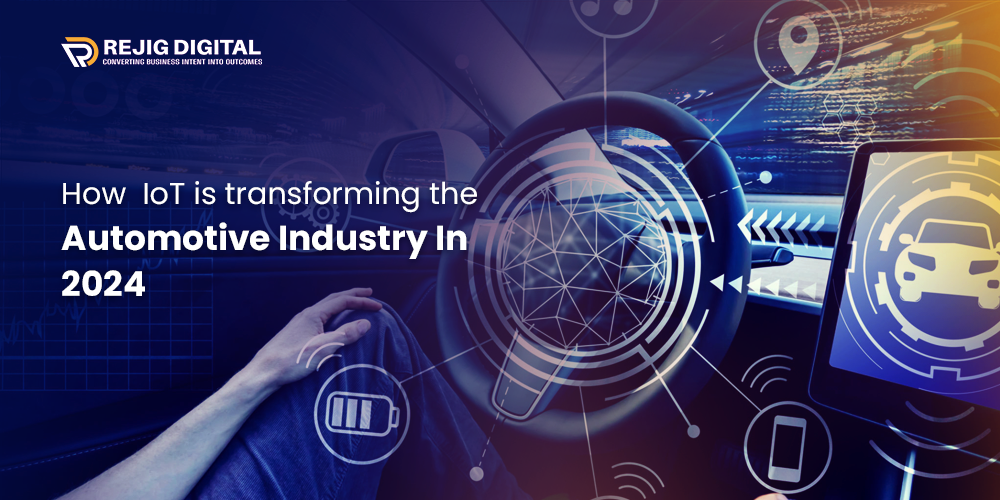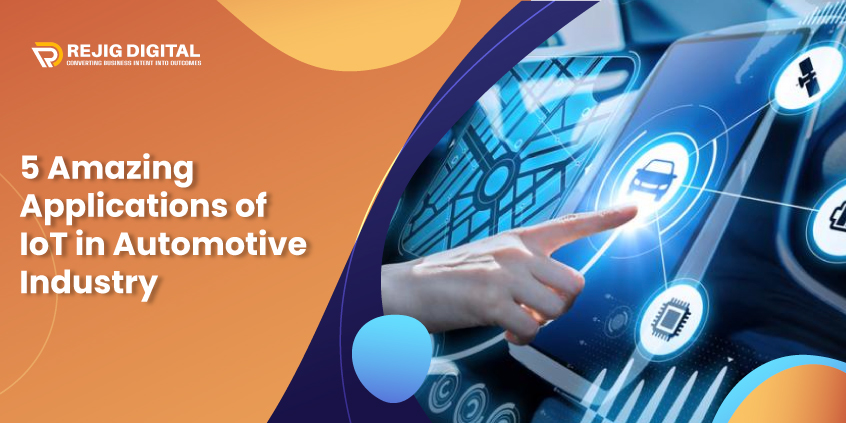The automotive industry has seen a transformational upgrade since the arrival of IoT (Internet of Things). It is projected that by 2025, over 400 million cars globally will be connected by a suite of sensors that will keep them externally updated. The new age of transportation is transforming automotive industry.
The incorporation of IoT sensors inside vehicles started around the 90s when vehicles were equipped with USB drives and Infotainment systems. By now these technologies have changed the entire driving experience and added multiple hidden features and value to it.
What is automotive IoT?
Automotive IoT is a part of the vast universe of industrial IoT solution that comprises numerous sensors & devices that are available in care and connected to the internet. These sensors provide or collect real-time information to assist the driver transforming automotive industry. The rise of EVs (Electric Vehicles) is also playing a huge role in the incorporation of IoT sensors in cars.
Types of Sensors inside the car
Camera
Lidar
Radar
Ultrasonic sensors
Position sensors
GPS
How IoT is Transforming Automotive Industry?
Improved Safety
Predictive Maintenance
Over-the-Air Update
Optimised Car Insurance
Infotainment in Vehicle
Theft detection
Efficient fleet management
Improved Safety
The primary element the sensors add to the driving experience is the sense of safety. IoT in automotive industry use advanced algorithms and machine learning technology to tackle various factors that enable the driver to drive the vehicle in a much safer way. The long-range and short-range camera helps to cruise control and break autonomously in case of collision.
Predictive Maintenance
IoT helps to reduce vehicle maintenance costs by applying a predictive maintenance approach. IoT sensors continuously monitor the health of vehicles and provide real-time information to prevent serious damage. This step plays a huge role in transforming automotive industry. Eg: One can see the battery health, charging status, tire pressure, motor health, etc. in a care dashboard of the latest electric vehicles.
Over-the-Air Updates
The features and facilities provided by the car manufacturers result in increasing customer satisfaction. Customers want their purchased vehicles to be future-savvy and easy to maintain. Over-the-air updates save valuable time and money for consumers by providing the latest updates on the car similar to updating a mobile phone.
Optimised Car Insurance
The vehicle insurance market is growing at 11.6% CAGR (Combined Annual Growth Rate). Optimised car insurance can help to customise the insurance plans based on the condition and health of the vehicle. Instead of the general approach of applying the same premium and maintenance, IoT enables vehicles to enjoy the luxury of customised plans tailored for them.
Infotainment in Vehicle
IoT-enabled vehicles provide multiple options when it comes to entertainment and information. Traditional vehicles used to be equipped with radio and CD/DVD players while new-age devices provide multiple entertainment sources in the vehicle console. Streaming live matches, and watching shows on OTT platforms like Netflix or Hulu is possible thanks to faster internet connectivity and the latest infotainment consoles.
Theft detection
Theft detection technology is one of the most popular uses of IoT sensors. With the help of this technology, users will be able to track the location and condition of the vehicle. These sensors also include alarming alerts that help to send alerts on the phone when a vehicle’s security is compromised.
Industrial Use cases
The Internet of Things (IoT) has changed the automotive landscape not only for consumers but for manufacturers and distributors as well. There are multiple use cases of this technology that industrialists can benefit from its incorporation.
Connected Cars
IoT in automotive industry enables the next-generation vehicles to come with multiple connectivity options with cellular tech at its core. Cellular technology helps the car to connect internally and exchange data. There are multiple connectivity options available such as V2V (Vehicle to Vehicle) V2I (Vehicle to Infrastructure) and V2N (Vehicle to Network)
Autonomous Vehicles
Many auto manufacturers have been trying for years to create truly autonomous vehicles. IoT in automotive industry has given a big boost to the autonomous vehcile dream. Companies are using different suites of sensors to collect data and help vehicles drive independently. Two famous technologies that are leading this path are LiDAR (Light detection and ranging) and Camera Vision.
Manufacturing of Automobiles
The manufacturing industry always embraces changes that help to increase production capacity. IoT sensors on the manufacturing lines are transforming automotive industry by efficiently produce vehicles and cut down on the wastage of time and resources.
Fleet Management
Freight companies, delivery companies, and transportation companies require fleet management facilities to efficiently utilise the vehicles. The Food delivery companies are primary examples of how efficient fleet management ensures the riders from nearby restaurants get the notification to pick up the order and deliver, reducing the delivery period.
Examples of IoT in the Automotive Industry
All the leading companies operating in the automotive industry are incorporating IoT sensors in their vehicle development
Uber & DoorDash for connected cars
Companies like Uber, Lyft, and DoorDash optimise fleet management to serve consumers and provide rapid service. The IoT sensors track the GPS location data of the user and connect it with nearby riders to reduce the end delivery period of the customer.
Tesla and Cruise for autonomous cars
Tesla is the pioneer in electric vehicle manufacturing and distribution. The company has revolutionised the way electronic vehicles are perceived. The vision tech used by Tesla’s Autopilot and FSD technology has shown impressive results in recent times. Cruise and Waymo on the other side are leading the autonomy race by relying on LiDAR. It is highly debatable which approach is correct.
FAQs
What is IoT in the automotive industry?
IoT in the automotive industry comprises vehicles that are equipped with IoT sensors, these sensors can be cameras, ultrasonics, LiDAR, radar, and GPS. These sensors collect a huge pile of data that is then used to increase the safety of drivers.
What are the benefits of automotive IoT?
Automotive IoT helps to interconnect vehicles or connect them with a central network. These methods help to increase the intelligence capability of vehicles.
How is IoT changing the automotive industry?
With the help of IoT sensors, the auto industry is able to gather valuable data that can help in the predictive maintenance of the vehicle and improve safety parameters on the road. The step plays a huge role in transforming automotive industry and taking it to new heights.
What is ADAS in a car?
Advanced Driver Assistance Systems (ADAS) prevent vehicle collisions and accidents by using artificial intelligence and sensor suites to help drive automatically.





